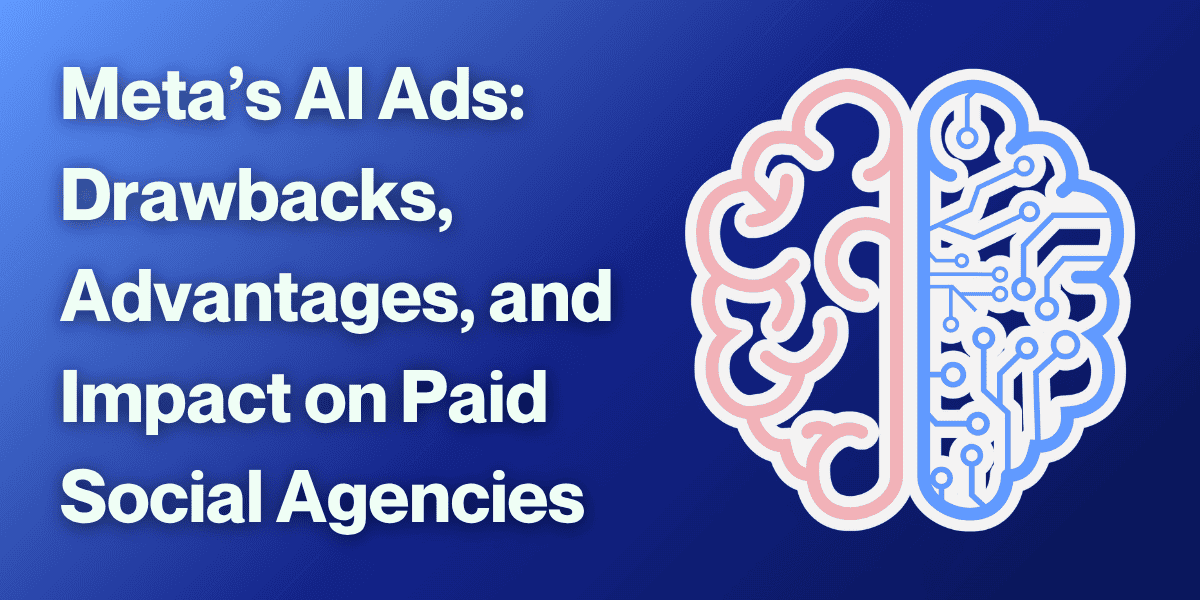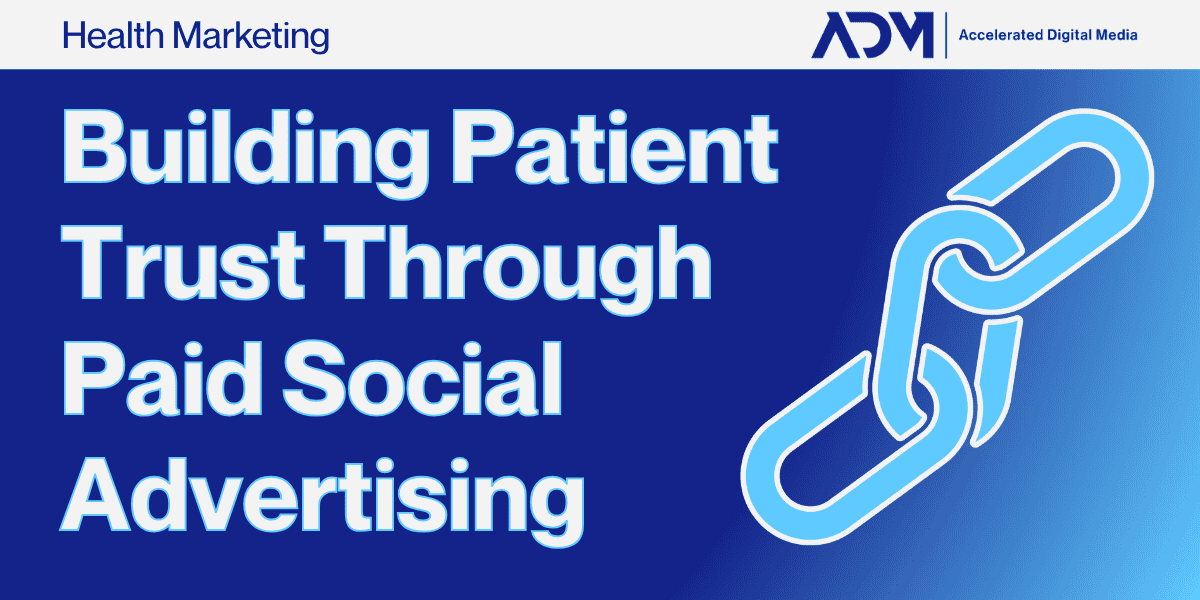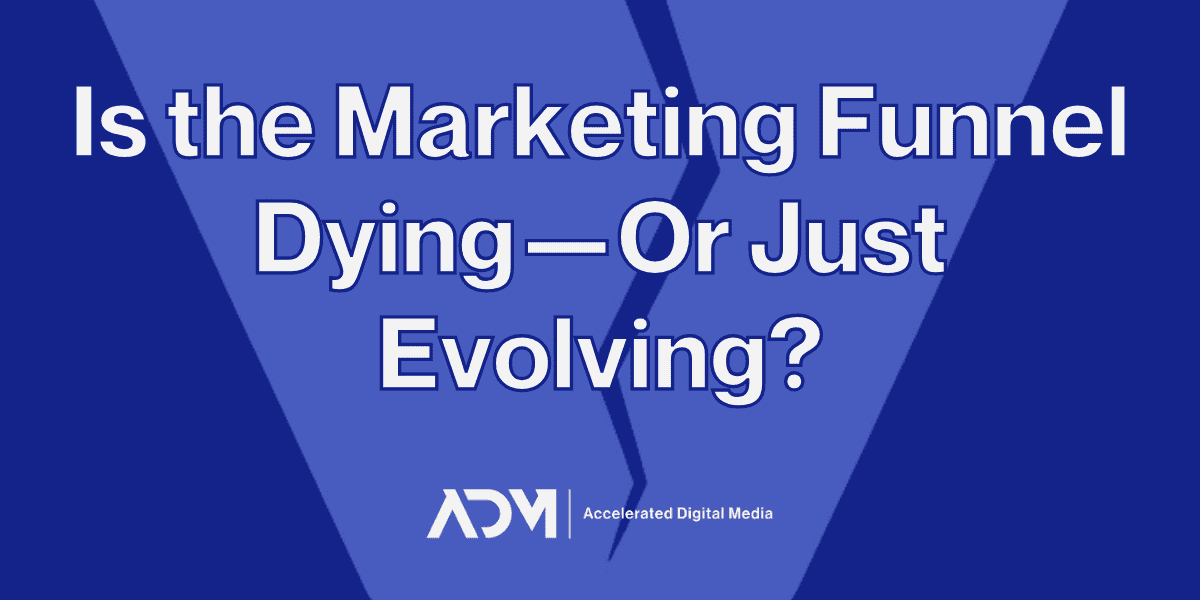Meta recently announced that it plans to unleash fully-automated ad creation by 2026. That’s little surprise to anyone paying attention to the digital marketing space—Meta AI ads are a natural continuation of where the social media marketing giant has already been heading.
In this case, it’s the extent of automation that’s newsworthy. Meta claims advertisers will be able to simply enter their business URL and then allow Meta’s algorithms to assemble creative and target users on their own based on the allotted budget.
But how effective can this approach really be? And how does the growing integration of AI into digital marketing change how digital marketing experts approach their craft? In this blog, we’ll weigh those questions.
Putting Meta’s AI Ads Push Into Perspective
According to reports, Meta’s plan is to create the option for entirely AI-generated ad campaigns with a minimal barrier to entry. That goal has been at the heart of a number of its innovations in recent years. Features like Advantage+ campaigns, for instance, have been rolled out with the same goal: to make advertising more “hands off” and accessible. In that case, the emphasis shifted away from narrow targeting and towards using creative and copy to help users self-select their relevance.
At least from Meta’s perspective, the intent here is seemingly to encourage more ad spending by making it incredibly easy to get Meta Ads off the ground. The new promise is essentially that if you have a website and a credit card, you can run Meta Ads with none of the setup, iteration, or strategizing that typically goes into launching an account.
But as we’ll discuss, just because that may become possible doesn’t mean it will be preferable.
The Drawbacks of AI-Generated Advertising
Despite the indisputable value AI brings, the human touch remains absolutely essential.
For one thing, every brand has its own distinct voice, style, and brand standards. Those distinct voices will absolutely be lost if brands relied on fully-automated messaging. While generative AI is continually getting better at taking inputs and attempting to editorialize them upon request, it really only works when you give it very specific and exhaustive prompts. Absent tight controls and extensive iteration, it’s liable to produce generic, messy, or even incoherent outputs.
Even as Meta has introduced AI-generated images, text, and video, brands have still needed human guidance to ensure that messaging is on-brand, resonates with real customers, and aligns with campaign goals across platforms. Thus far, we’ve seen Meta’s generative AI creative cause more headaches than successes for brands that have attempted to lean into the available features in-platform.
If you are looking to dabble further into AI-generated ad creation, it’s vitally important to know the “dos and don’ts” of your own brand. What do you definitely not want automated ads to convey? Create a detailed list of guidelines that will be used for directions or prompts in the future, and perhaps most importantly, prepare to spend a lot of time QAing and re-iterating.
It’s rare you’ll love the first result AI gives you. It’s not an outsourcing resource; it’s a complementary tool. AI can still function to fill in some gaps or help generate ideas, but ultimately if you want to maintain some level of uniqueness for your brand, the amount of detail you’d need to include in your prompts might result in as much effort as developing some yourself or with your creative partner.
Goal-Oriented Strategies Require Human Control
Another issue with an entirely AI-based Meta Ads strategy is that AI doesn’t inherently understand the nuances of marketing itself. Things like broader brand goals, product-specific margin implications, seasonal trends, or operational constraints like inventory or shipping limitations. These nuances influence what products should be prioritized and how spend should be distributed. In order to account for this nuance, human management is required to avoid poor customer experience and inefficient use of spend.
Many businesses rely on external tools and platforms (like GA4 and third-party multitouch attribution or incrementality tools) as their ultimate source of truth. For most of ADM’s clients, Meta’s in-platform data alone often doesn’t accurately reflect their business goals or align with how they measure success. This gap means a human needs to regularly assess whether high in-platform performance actually drives real, bottom-line results.
In our experience, this is critical, as in-platform trends can be contradictory to outside sources of truth, leading the platform’s automation to spend incorrectly without human management to correct it.
Areas Where AI is Helpful
None of this is to say that Meta’s AI hasn’t offered up any advantages. In fact, we’re big champions of the Advantage+ advertising suite, which has helped restore a good deal of efficacy and efficiency to Meta advertising after the difficulties originally created by Apple’s iOS14 update in 2021.
While tools like Advantage+ did initially take a bit of control away from advertisers in exchange for improved performance, it’s interesting to point out that Meta is actually unveiling a newer version of these campaigns that allow for more manual targeting options than before. For example, Advantage+ was originally limited to just Broad targeting with some manual exclusions allowed—but once this new product rollout is complete, advertisers will be able to combine Lookalikes, Interest, Demographic, and Behavioral parameters with the Advantage+ algorithms.
ADM views this as a very positive step for Meta, creating a best-of-both-worlds scenario: One where advanced algorithms and machine learning can streamline campaign setups and improve targeting while still allowing advertisers to manage their own strategy and brand goals.
How AI is Changing the Role of Paid Social Agencies
If a prospective client came to us asking: “why should I hire a Facebook ads agency if Meta’s AI can do it all?” we’d have a simple answer: For truly effective marketing campaigns, you need human oversight. Expanding on that, we’d explain everything that goes into that: constant monitoring; data analysis to glean insights; a sophisticated campaign structure that reinforces multiple stages of the sales funnel; ways to find and implement optimizations mid-flight; quality assurance; the ability to weigh in-platform metrics against outside reporting and real-time business trends, and more.
All of those challenges are not going to be tackled by Meta’s AI alone. Meta’s AI will merely help with the efficiency of your built campaigns and perhaps augment creative iteration. In short, while these tools may reduce the amount of manual work required to launch ads, they don’t replace the strategic thinking needed to ensure that ads are truly working for the business.
As AI-generated ads and campaigns advance, however, paid social managers will need to continue shifting into even-more strategic roles—demonstrating value and expertise by considering external factors, analyzing data, and designing effective, holistic Meta Ads strategies. That may lead to even closer collaborations with our clients, and perhaps more time and thought spent outside of Meta Ads Manager.




